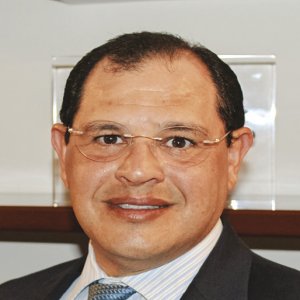Rich Geological History Creates Bright Mining Future

STORY INLINE POST
Mexico is located in the central-northern part of the American continent, a block that evolved 250 million years ago, detached from the super continent called Pangea. The geological history of this emerging part of the planet has been changing, although always following a line of evolution that gave rise to multiple landscapes and geo-forms. The associated resources are derived from the earliest phases of continental drift. Most of these resources are related to magmatic processes - that is, those produced by the interaction between the oceanic and continental tectonic plates.
From the Mexican Republic to Patagonia at the southmost point of the continent, along the west coast of South America, over the last 180 million years, the phenomenon called subduction prevails. The oceanic tectonic plates of the Pacific collide and slide below those of North America, Central America and South America, which gives the region surprising but dangerous mobility, characterized by seismic zones, which is why millions of people living on the coastline and within the continent are permanently at risk.
The settlement and historical evolution gave Mexico and the countries of Central America and South America a privileged position in terms of precious, basic and nonmetallic mineral deposits. The three countries have an important historical, economic and social component associated with mining activities, even predating the sixteenth century Spanish invasion.
As a result, each country is responsible for promoting mining activities. Mexico covers almost 2 million km2; Peru 1.2 billion km2 and Chile 756,000km2. Among the three countries, 41.2 percent of the world’s silver, 43.6 percent of copper and 9 percent of gold is produced, so it can be said that mining is one of the main catalysts for the country’s economic development. The activity is carried out with care for the environment and respect for the preservation and restoration of nature in those communities and regions in which mineral deposits are explored and exploited.
The history of mining in Mexico and Latin America has been more legendary than lucrative, at least in the early epoch, up until industrial modernization and the evolution of technology, which occurred well into the 20th century.
Minerals do not exist as a by-product. There is always a reason, a process or a circumstance that allows us to associate them with a geological event. Geological sciences have developed since the 16th century - when the De Re Metallica treatise was written by the German Georgius Agricola. This was drafted in such a way that not only allows us to know more about the structure of the thin solid crust upon which mankind lives but also about nonrenewable resources such as minerals, petroleum, uranium, coal and geothermal deposits.
The knowledge of geological evolution is exciting and important because within this environment it is possible to coexist and marvel at the perfection of nature which, through an almost miraculous balance, has provided all the raw materials that the human race has used since it appeared on the face of the earth.
The concept of exploration has also appeared since time immemorial, and of course the practice has been perfected over time. All countries, governments and societies are concerned with continuing to provide the materials required to maintain the standard of living of today’s society. None of the habits or activities of man and woman would be possible if not for raw materials to build the everyday tools of modernity. There is high demand and that is why it is essential to continue supplying those materials.
Mexico’s landscape is varied, resulting from the geological evolution that gave rise to the formation of extensive mountain ranges of volcanic or sedimentary origin, desert and semi-desert plains, mountain ranges with active volcanoes, rock complexes and reliefs in the south and calcareous platforms in the southeast of the country. The Gulf of Mexico’s coastal zones are wide and their Pacific counterparts relatively narrow, which can be seen in the case of the Sierra Madre Occidental, the province of the world’s largest gold and silver epithermal deposits.

















